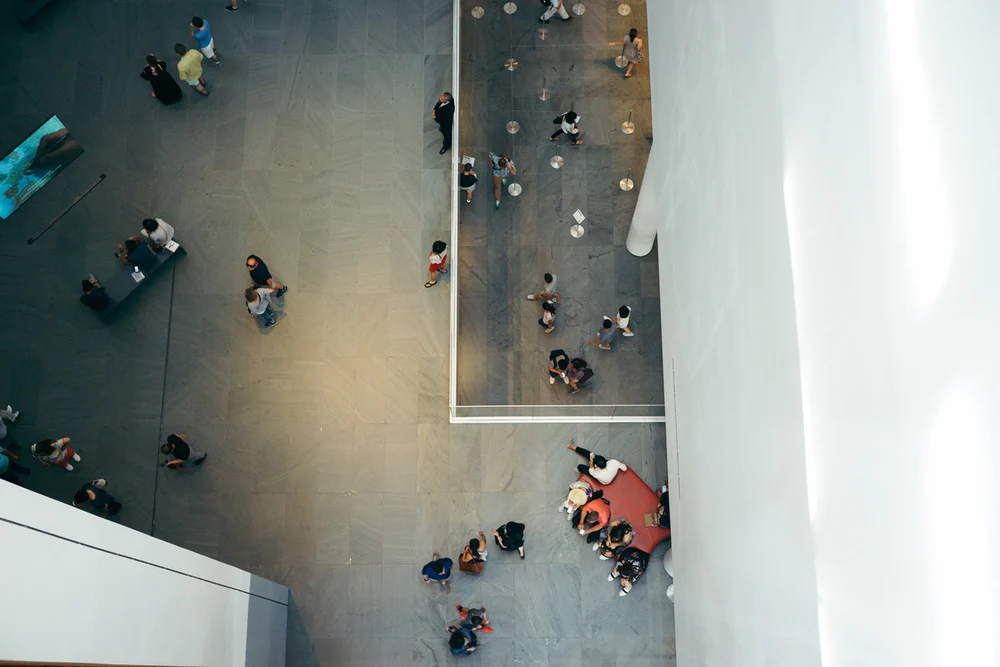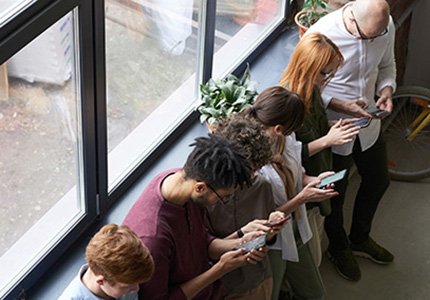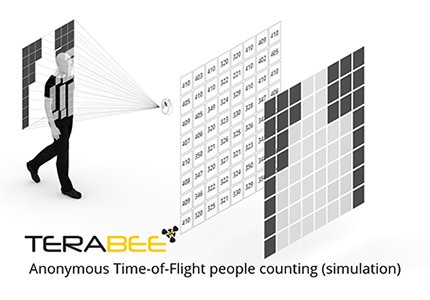Corporate offices, commercial real estate, and industrial companies are increasingly turning towards people counters as a cost-effective solution to meeting their changing business objectives.
Gathering footfall data over time offers valuable insights into staff and visitor behavior, while real-time monitoring may be necessary for security measures.
With numerous key performance indicators (KPIs) under scrutiny in various business settings, it is natural that several distinct technologies have arisen to satisfy different needs. People counter sensors are now available in a range of configurations and formats based on several dissimilar sensor technologies.
In this article, we will be exploring how sensors for counting people work in more detail, with a focus on comparing the technologies of underlying sensor types.
1. Optical People Counters: CCTV & Stereo Vision

Closed-circuit television (CCTV) is one of the most common people counter technologies in use today, though it is primarily employed for security purposes rather than data acquisition. Retailers make pervasive use of CCTV systems to improve business security by deterring criminals and providing visual evidence in the event of criminal activity.
Prior to the onset of intelligent video analytics and on-board computer vision, people counting with CCTV was a time-consuming manual process. Now, visual optics and simulated stereo vision can be supplemented with machine-learning for automated facial recognition and object detection. This can cost significantly more than standard video surveillance products, like CCTV.
The main drawback of these people counting systems is the lack of anonymity, since they are aimed at security purposes, the growing concern of personal privacy is leading to a backlash against this technology, also, it is prone to counting errors since their counting accuracy is limited by ambient environment factors such as low-light and shadows.
2. WiFi People Counters: Signal Tracking

Tracking WiFi probe requests is an advanced, if inaccurate, method of counting people. Estimates suggest that there are as many as 6.92 billion smartphone users worldwide, each device having a unique Media Access Control (MAC) address. With WiFi-enabled, devices broadcast their MAC address in what is known as a probe request. Internet routers can acquire these signals and triangulate the position of the device based on signal strength. Multiple routers offer a more detailed insight into device position by comparing relative signal strengths.
There are many problems with WiFi people counters. First, they operate on the assumption that all people are carrying a smart device with WiFi-enabled. Second, positional accuracy is poor compared to most other people counting technologies. Third, it is controversial as the system tracks user devices without asking for consent.
3. Infrared People Counters: Time-of-Flight Sensors

Based on innovative Time-of-Flight (ToF) technology, infrared emitters offer an unprecedented combination of precise and private people counting performance. Using 3D IR depth sensors for counting people with an expanded Field-of-View, ToF people counters detect objects as a function of interrupted signal beams. This is used to monitor people entering/leaving a specific area in real-time with exceptional accuracy and complete anonymity.
Conventional infrared, or thermal, sensors have been criticized for poor accuracy in terms of false object detection and lack of clarity between multiple objects within a single Field-of-View. At Terabee, we have resolved these issues with the Terabee People Counting L-XL, an innovative counting solution which features an innovative and proprietary people counting algorithm, offering 98% accuracy. This is achieved with advanced filtering techniques to remove static people and objects that might otherwise reduce the counting accuracy.
An accurate, anonymous solution
Time-of-Flight technology is an effective means of counting people without intruding on their privacy or private data. Time-of-Flight sensors from Terabee don’t contain a camera or camera technology, so they do not recognize faces or track individuals’ movements.
With ToF technology, individuals can move freely through monitored areas without fear of being tracked or monitored. And because only anonymous data is ever collected, the privacy of individuals is always protected. You can say that Time-of-Flight people counters from Terabee respect data privacy and anonymity by their very design.
By accurately monitoring foot traffic and occupancy levels, universities can identify opportunities to reduce energy consumption, optimize facility maintenance schedules, and allocate resources more efficiently, ultimately leading to cost savings in the long run.
As Terabee people counters provide real-time data on the number of people within a designated space within a higher education or university environment, heating, air conditioning and ventilation (HVAC) and lighting systems can make use of this data, linked via the building management system (BMS) to enable energy savings and reduced energy costs. See the article on how Feedback Solutions has enabled energy savings of 40% or more of HVAC-related energy consumption in a U.S. university campus, coming from reduced fan speeds and optimization of the volume of outside air being heated or cooled.
Integration with existing systems
Terabee people counters are designed to seamlessly integrate with existing infrastructure and systems, making implementation straightforward for educational facilities. Whether it be integrating with access control systems, building management systems, or data analytics platforms, these counters offer compatibility and flexibility, allowing universities to leverage existing investments while enhancing their operational capabilities.
The People Flow Counting L-XL LoRa and People Flow Counting M 2.0 LoRa devices use LoRaWAN, which eliminates the need to install PoE cables or connect to the main IT system. This makes them ideal sensors for historic buildings which can be common in universities. The LoRa-enabled solution avoids the need to retrofit Ethernet cabling, which can be both expensive and time-consuming.


